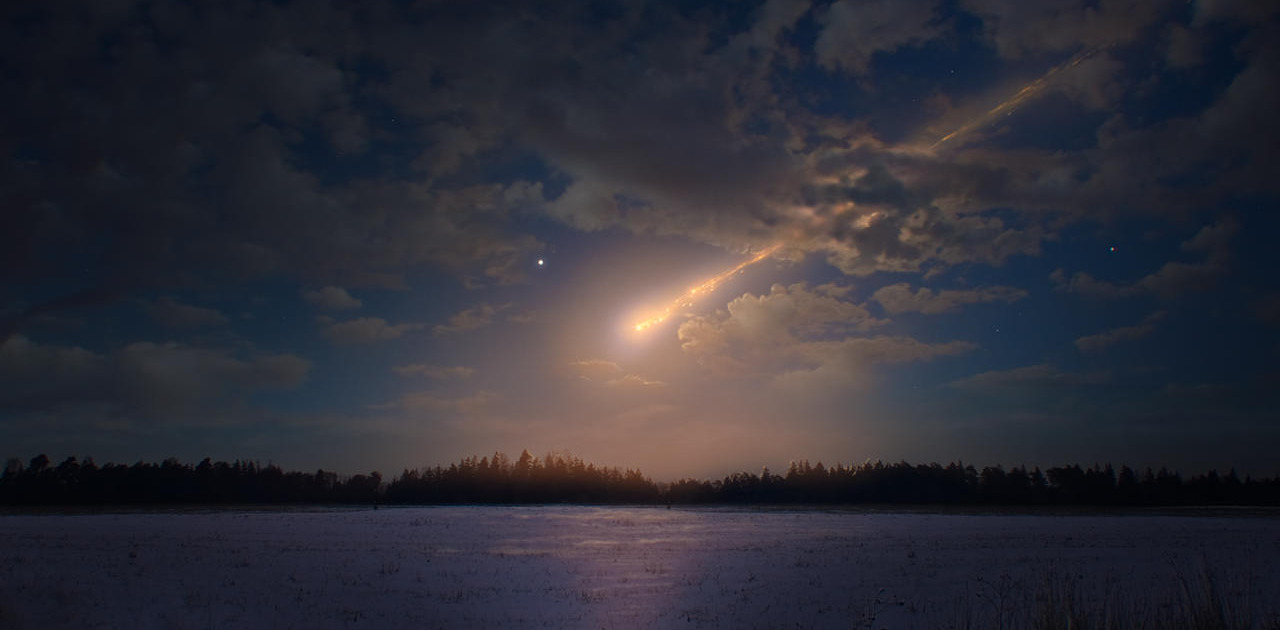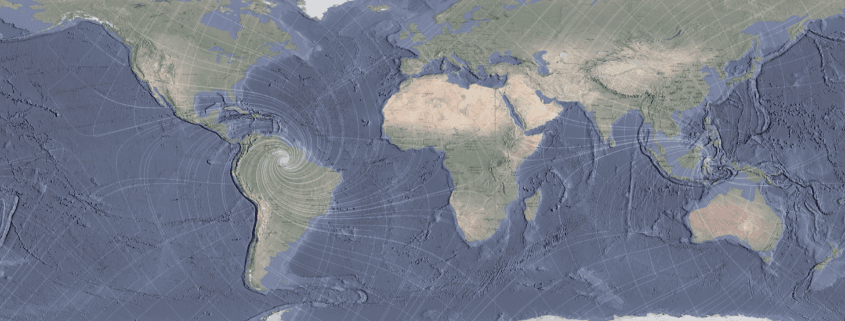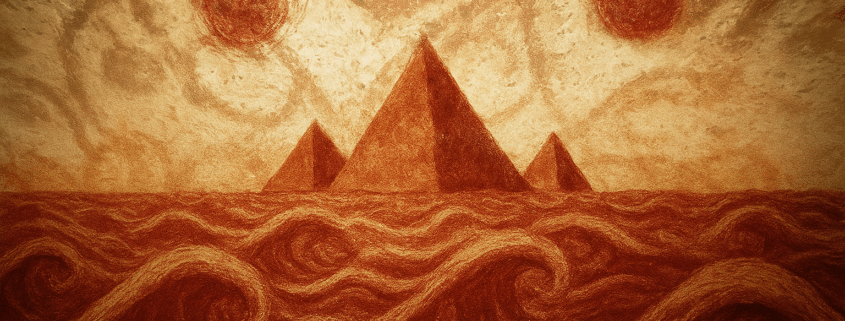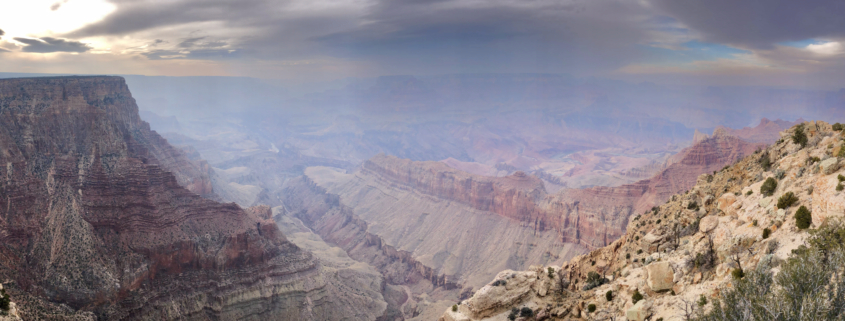It is 7.17 am. Eastern Standard Time, on the thirtieth of June 1994. Suddenly the power fails. The basement centre of the Defense Communication Operations Unit adjoining the White House is plunged into darkness, and only the distant rumble of early morning traffic reminds the duty officer that another day has already begun. There have been power failures before, however, and there is no hint of impending crisis. Almost immediately, an automatic switch brings in the emergency supply. But now the duty officer observes that something is wrong. Telephone links to the outside world have gone. These include the open links, via commercial cables, to NORAD’s bunker a thousand feet under Cheyenne Peak in Colorado, and to the Offutt command post near Omaha.
Within seconds it is ascertained that neither the President nor Vice President, both of whom are out of town, can be contacted: radio communications are blacked out, on all frequencies. Further, because of the telephone failure, none of the Presidential stand-ins scattered around town and country can be expected to call in to give their exact locations, as they would normally if there were a recognized national emergency. However, the Secretary of Defense, third in the chain of command, is at breakfast somewhere in the White House.
It has taken 45 seconds to confirm the general breakdown of communications; it takes another 45 seconds to locate the Secretary of Defense and inform him of the problem; and it is another 90 seconds before the Secretary finds himself in the cramped under-ground Situation Room along with his advisors. He is aware that the travel time of a missile from a hostile submarine off the Atlantic coast to Washington is just over fifteen minutes; three of these minutes have gone.
Emergency procedures for transferring authority are now in hand and the Secretary of Defense becomes in effect the new President. The ‘gold codes’, which would enable him to initiate a nuclear response, are placed before him. The black STOP books with their theoretical scenarios are produced.
The ‘Mystic’ and ‘Nationwide’ communication systems are successfully activated utilizing deeply buried, protected cables. He now has control of the National Command Authority, the channel of communication for execution of a nuclear strike; and another two minutes have gone.The underground cables to Cheyenne, Offutt and other SAC bases are now open with secure links to the radar lines covering northern approaches.
None of them — Dew Line, the 55th Parallel or Pine Tree — is functioning properly, however; their screens are strongly upset with many spurious signals: there seem to be huge scattering modes in the ionosphere. Satellite communication with military forces abroad is impaired. No information is coming from the big synchronous DSP satellites over South America, the central Pacific or the Indian Ocean; nothing is arriving from the relay stations near Aurora in Colorado or Pine Gap in Australia. And the ‘hot line’ is dead. On the other hand in the minutes before the confusion they had reported no anomalous infrared emissions and hence no evidence of heat from the exhausts of rising missiles. At the moment all that can be said is that there is a very unusual atmospheric disturbance, that telephone lines are dead and that there are widespread power failures. The disturbed atmosphere might just be some strange effect due to sunspots or the like, but the telephone and power failures are ominous. On such a scale, the only plausible explanation is an electromagnetic pulse caused by nuclear fireballs.
Eight minutes into the emergency — if it is an emergency — the Secretary issues a number of precautionary orders. His deputy is ordered upstairs to await the arrival of a helicopter from Quantico Marine Corps base about 30 miles away. This will transport the deputy to the waiting ‘Nightwatch’, a Boeing 747 which functions as an airborne command post. Another helicopter is dispatched to retrieve the President. A ‘flash alert’ is sent to Hawaii, to get a second command post aloft, but the message goes unacknowledged. SAC missile silos and bomber bases are put on full alert.
Nine minutes on, information begins to flood in from sensors and antennae in orbit, at sea and scattered round the Earth. Much of it is reassuring: there are no patterns of activity on land, sea or air consistent with hostile intentions, no evacuations of barracks or the like are in progress. But now something deeply disturbing is coming in from one of the DSP satellites. A television screen shows a brilliant patch over south-east Nevada, bright enough to saturate the lead sulphide cells in the satellite. Intense heat is radiating from an area of about ten thousand square kilometers. Distant ground sensors are reporting large tremors emanating from the same area — unnecessarily, as the Situation Room has begun to sway and vibrate, and loud rumblings are coming up from deep under the ground. Then, from Offutt, comes devastating news. Air Force pilots are reporting a huge explosion in the desert area close to Boulder City. The city itself has gone, reduced to rubble. Las Vegas and other towns within 100 miles are enveloped in huge firestorms. The Hoover Dam has disintegrated. A column of dust and rubble has been sucked up to great altitude and a mushroom cloud is spreading outwards. Huge amounts of smoke are blanketing the state of Arizona and spreading into New Mexico itself. The Secretary and his advisors can see it all on their television screens.
The Secretary now has a maximum of five minutes in which to discuss and evaluate the information, make any decisions and implement them. He is informed that the damage corresponds to explosions amounting to at least twenty megatons, and must have been caused by more than one bomb. The possibility of accidental detonations is quickly ruled out, because of its technical improbability and the magnitude of the explosion. Further, he is told that both ground and air bursts must have been involved to disrupt both cable and ionospheric communications. The conclusion seems unavoidable that for some reason the Soviets have targeted bombs on to American territory giving somehow circumvented military radars. Perhaps armed satellites with low radar cross-section have suddenly been diverted downwards; or perhaps submarine-launched cruise missiles have been fired; or perhaps bombs had already been smuggled into the area. But why? The desert is a bizarre choice of target, Boulder, Las Vegas and the Hoover Dam of low strategic value. No sense can be made of the attack. Perhaps, it is suggested, they were chosen because they have little value. The attack may be a prelude to some major military adventure and may be a warning, ‘keep out’ notice pitched at a level low enough that the risks of nuclear response are not justified and yet high enough to demonstrate deadly earnest. Or, the impacts may be intended to disrupt radar and communications for reasons which can only be guessed at.
Whatever the merits of such speculations, the Secretary cannot responsibly rule out the possibility that further bombs may follow, completely jamming command and control over nuclear weapons, or even that Washington is an imminent target whose destruction might for example be awaiting only the positioning of armed satellites, already in orbit, over the city, or the arrival of cruise missiles. Twelve minutes into the emergency, the Secretary’s deputy is still on the White House lawn waiting for a helicopter, there is no communication with the President and the only information still coming in confirms that towns over several thousand square miles have been destroyed in nuclear blasts. He has no time left and must come to an immediate decision.
He could initiate the dreaded ‘Major Attack Option’. This is quickly ruled out because it is beyond reason, leading only to mutual annihilation. He could choose to do nothing. But it is pointed out that in the present situation paralysis could also lead to holocaust. Whether the National Command Authority is ‘decapitated’ in the next few minutes depends on whether further missiles are about to land. If they are, then all control over the counter-strike force may be lost and, with bombs falling on the USA, a full scale attack on the Soviet Union will, following standing instructions, be unleashed by individual submarine commanders, and by the one star generals aboard their Cover All airborne command posts. It is therefore vital to forestall any further nuclear attacks by calling the bluff, that is by retaliating at a similar level. All the options are dangerous. The least dangerous is an immediate ‘controlled response’.
The discussions are interrupted by confused reports of a storm of missiles, a cataract of fire pouring in over the states of the western seaboard and Canada. But the reports go unconfirmed; again, communications are failing over the whole of the United States. It is 7:30 am. Eastern Standard Time, on the thirtieth of June, in the revamped over-the-horizon radar base near Gomel in Byelo-Russia officers are horrified to see, through the confusion of the still disturbed ionosphere, a dozen missile tracks appealing on their screens. Peacekeepers are rising over the plains of Kansas…
Even as they look, however, another unheralded missile is encountering the atmosphere high over the Bernese Oberland. Coming in at sixty thousand miles an hour, a hundred kilometers above Interlaken, the missile is gathering around itself a narrow skin of compressed air whose temperature surges up to about half a million degrees. Waves ripple within the hot air turned-plasma; atoms, scattering off the waves, reach huge speeds, collide violently, and are stripped to their nuclei; electrons, torn from the atoms.
Accelerate violently and radiate fiercely at all wavelengths. For the most part this fierce emission is invisible, hard ultraviolet light or soft X-rays, and the atmosphere absorbs these at altitude, 50 to 90 kilometers up. Only a tiny fraction of the radiation reaches the ground as visible light. Even so, Europe is lit up as if with a flashbulb: survivors from Ireland to Austria and from Denmark to Italy later describe’ a bluish white light, too bright for the naked eye’, or ‘a fire brighter than the Sun’, or ‘a thunderbolt … blinding in its intensity’. Approaching from the south east, the missile passes on a long, shallow trajectory, throwing moving shadows over the Jungfrau, Berne and Basle. It crosses the sky in a few seconds, leaving a wake of hot, luminous debris and air surrounded by a rapidly expanding red trail. Ten seconds after its first encounter with the atmosphere, the missile has penetrated the ionosphere, passed though the stratosphere and is moving rapidly into the lower atmosphere.
Here at an altitude between 10 and 15 kilometers, the missile hits scientifically denser air and suddenly disintegrates. It never reaches the ground therefore and instead unloads its stored-up power, 200 megatons of impact energy, into the air over Louvain, a medium-sized town in central Belgium. The missile vaporizes in a third of a second. It is now, momentarily, an incandescent cylinder a few kilometers long and a few hundred meters across. The temperature within the cylinder is over 100, 000° C. The pressure for an instant reaches some tens of thousands of tons per square inch; the missile blows up into a ball of fire radiating X-rays of huge intensity.
These are absorbed within a few meters by the surrounding air, but, in doing so, the envelope of atmospheric gas acquires their energy. Simultaneously, hot, compressed material is thrusting rapidly outwards from the point of disintegration and snowploughing the air ahead of it. A blast wave develops; the fireball expands. From the first trace of incandescent tail high over Interlaken, to the beginnings of the fireball over Louvain, less than eleven seconds have elapsed.
When the fireball has reached about four miles in diameter the shock wave breaks away and races ahead of it. The corresponding blast brings a wind speed of over a thousand miles an hour. Survival at this distance is impossible; Louvain, directly under the fireball, disappears in less than a second. The fireball meanwhile inflates and soars rapidly upwards for several kilometers until, in the stratosphere; it flattens out and takes the classical mushroom shape. The cloud is seen from Copenhagen to Florence, from Edinburgh to Budapest. And over the whole of Europe, the ground shakes and buildings sway dangerously. Trains are derailed in southern England and beneath the Channel. The mushroom cloud is quickly broken up by jet streams at about 60 kilometers altitude and is subsequently dispersed around the globe.
Within 25 kilometers of Louvain, all buildings are reduced to rubble. A few girder bridges survive due to accidental cancellation of pressure waves from above and below. The shock wave reaches Brussels to the west and Liege to the east. The buildings within these cities collapse, domino-like, as the wave sweeps through; and all traces of roads are immediately erased by rubble.
Beyond 25 kilometers, some structures survive, although few houses remain intact. Throughout Antwerp, for example, about 50 kilometers from ground zero, roofs are stripped bare of tiles and window frames and doors are blown in. Beyond this the damage becomes lighter: about 100 kilometers to the north the blast, sweeping through Eindhoven, blows tiles off roofs and shatters windows.
People out of doors and 25 kilometers from Louvain are hurled about 10 meters and are usually killed. Flying glass, though, is the greatest hazard. Shopping precincts and office complexes within 50 kilometers find themselves swept without warning by lethal blizzards of flying glass. Indeed, shards of glass account for most of the loss of life in these areas. Even 100 kilometers from the epicenter of the explosion, the blast is still strongenough to flatten forests. Nuclear reactors within reach of the ground tremors and air waves are damaged, their coolant pipes snapped and containment vessels cracked. Some begin the process of meltdown. Already, swathes of radioactive debris are pouring into the atmosphere, mingling with the dense chemical smog, drifting into Germany, and destined for Poland and Scandinavia.
Immense destruction is caused by fire as well as blast. Serious flash burns from the thermal pulse of the fireball are sustained over an area of several thousands square kilometers, and virtually all exposed individuals within about 50 kilometers of ground zero receive third degree burns (charred skin) requiring labour-intensive hospital treatment, but in the hours and days following the impact it is impossible for medical services from outside to reach, let alone cope with, the seriously burned, and many of the injured die untreated from shock within twelve hours.
The intense heat from the rising fireball sets off fires at a range of 70 kilometres or more. Fanned by the updraft of air sucked in behind the rising ball, these merge into a mass fire, a single all-consuming conflagration. Such fire services as have survived are immobilized in a sea of debris, deprived of water and overwhelmed by the extent of the raging fire. The Sun eventually sets, but Europe is already dark, only the light from raging fires penetrates the smoke.
Sixteen hours after the event the Sun rises again, but it shines down only on a dense, choking smog created by blazing cities and petrochemical complexes. Aerial survey is impossible. Within a circle of radius 50 kilometres, the dead greatly outnumber the living. Even without the mass fire which is still blazing, penetration of the area is impossible as roads are strewn by debris and wrecked vehicles. It will be several days before the fires burn themselves out and the smog disperses enough to reveal the flattened cities and towns, villages and farms. Belgium, it will turn out, has been obliterated. And several weeks would need to pass before French, German and Dutch forces have the capacity to clear the roads, shelter the living and bury the dead. Belgium, however, will wait in vain…
For the Earth has encountered a cosmic swarm. Twelve hours late, the death dealing fusillade is peppering the other side of the globe. Indeed, the bombardment continues for nearly a night and day, the planet rotating all the while, first presenting one face, then the other, until eventually it emerges on the far side of the swarm. Compared with the fireball over Hiroshima at the end of the Second World War, that over Boulder was a thousand times greater whilst that over Louvain was ten times bigger again, but they are just two of the several hundred pieces of grape-shot that meet the Earth, and they are trivial compared larger pieces of ordnance in train. These rarer missiles are each capable of unloading as much energy as would be unleashed in a major nuclear war, and in their case the atmosphere provides relatively little protection. Thus unlike their smaller counterparts, these larger bodies get through to the surface of the Earth, an ocean impact generating a tsunami, a land impact generating a small crater. There is another difference: each huge fireball is now too energetic to be properly contained by the atmosphere. As before, it ascends, laden with dust, but now it breaks though generating a vacuum in its wake which is filled by a cast stream of air. Thus, on the ground, once the initial blast has swept past, there is a counter flowing hurricane, itself sweeping up dust thrown up by the impact, and blowing it upwards after the rapidly receding fireball. Within minutes the fireball has reached an altitude of several hundred kilometers, in the high stratosphere. Here it stabilizes, and the dust begins to spill outwards over the top of the atmosphere.
Closer to the ground, the intense heat of impact from one large fireball has generated hundreds of fires over an area about the size of France. Essentially everything combustible along the line of sight of the rising fireball has caught fire. Loss of life over this area, already massive from the prompt effects of blast and heat, becomes almost complete when these fires merge into a single, all-consuming conflagration. About fifty million tons of smoke pour upwards, in dense plumes rising to kilometers into the atmosphere.
Within a few days, the wildfires are almost global in extent. Tens of millions of tons of fine dust lofted into the stratosphere, have spread over the northern hemisphere and are beginning to cross into the southern one. At ground level, sunlight is blocked from reaching the ground, and all activity takes place in a black, choking smog. There is no question of mounting any rescue operation to save the devastated areas: the damage is so widespread that communications around the globe have now effectively ceased to exist; individual regions are virtually isolated; devastated populations are thrown back on their own resources; dozens of cities are reduced to smouldering rubble; river pollution is rife; and forests throughout the world are ablaze. Life as we know it is drawing to a close.
The cosmic encounter is over. Our planet has finally emerged from the swarm. Both continue, of course, along their predestined paths, the swarm merely a few missiles less, the Earth now charred and encased in a lingering veil of dust and smoke. With the destruction of cities and urban areas, the infrastructure of civilization has already gone; with the loss of sunlight, continental land temperatures have already plummeted to those of a Siberian winter; thick ice covers rivers and lakes; storms of unprecedented intensity rage along the continental margins, with animal and plant life devastated, farming and agriculture have already collapsed. Soon, the disrupted weather patterns will cause the continental land masses to be blanketed in a thick covering of snow.
After several months, the Sun begins to be seen trough a hazy sky. When, eventually, the dust clears, the land masses of the northern hemisphere are covered in a snowfield which, reflecting sunlight back into space, has become permanent. The snowfield is added to each year, centimeters at a time. A thousand years on, North America and Europe are covered in ice sheets half a mile thick and the ocean level has dropped by about fifty meters. The Earth is locked into a new ice age. Mankind has survived, but human population has crashed and society has dissolved into hungry marauding bands. A new ecological balance is being worked out on the blasted landscape: indeed the struggle for survival has only just begun…










